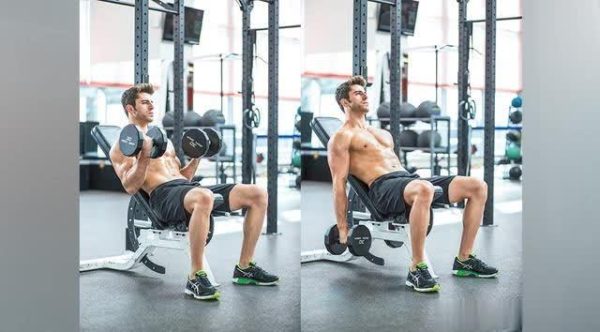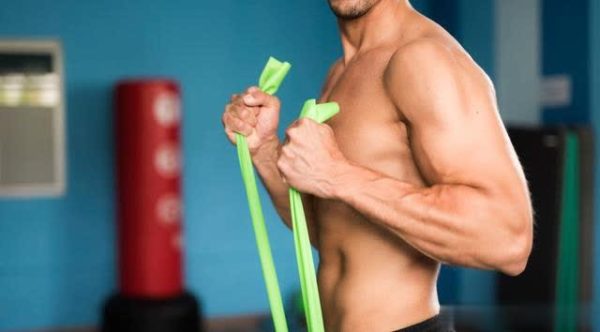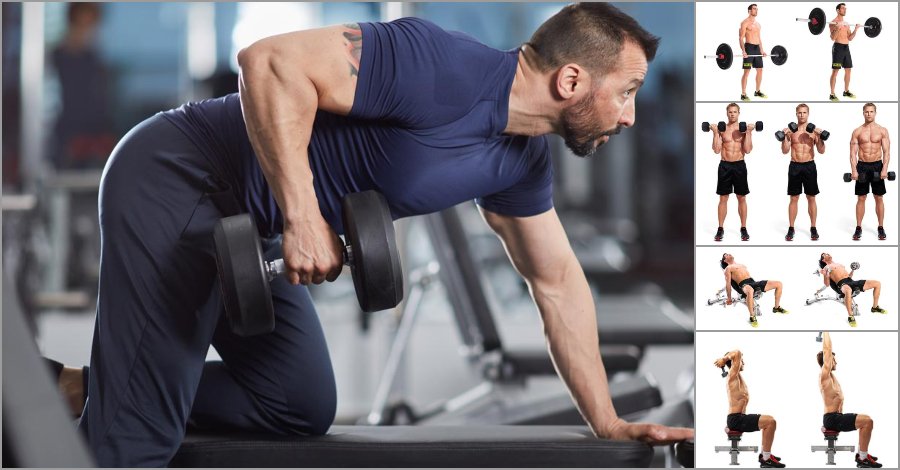Want bigger, better biceps? Then just do barbell curls until your sick. If only it were that easy. Sometimes it is! We take a more calculated, scientific approach to training, which helps you reach your full potential with regards to your physique goals. Right near the top of the list of body parts that guys want to bring up are the biceps.
By incorporating these five specific strategies into your normal routine, you’ll experience better overall muscle size and quality. Arm yourself with these top techniques to build biceps that have height, width, and detail.
Get a Grip:
The grip-width you use on barbell curls can make all the difference on your biceps growth. Using a standard, shoulder-width grip uses both the long (outer) head and short (inner) head of the biceps fairly evenly. The wider you go from there, the more short head emphasis; the narrower you go, the more long head emphasis.

So be sure to include, in addition to shoulder-width grip curls, some wider-than-shoulder-width-grip curls to place extra stress on the short head, and close-grip curls to place extra stress on the long head. This will help to bring up the size of each biceps head, which together will create larger biceps.
Start your biceps workout with four sets of biceps curls. On set one, take a close-grip (about eight inches apart). Set two, a hip-width grip. On set three, take a shoulder-width grip and finish set four with a wide-grip (about six inches wider than shoulder-width).
Take a Seat:
By now you probably know the benefits of partial movements. Completing reps through only part of an exercise helps you become stronger through that particular range. But unlike 21s, which probably spring to mind when you think of biceps and partials, we are offering you a way to train heavy for the greatest gains.

When you do a full range of motion curl, you are limited to a weight that you can perform through the weakest portion of the ROM (if you’re using proper form). Doing seated barbell curls, which remove the bottom half of the movement since the bar comes to rest on your thighs, helps you focus more stress on the biceps and you can place a greater overload on the biceps.
Since you are strongest in the top half of the ROM. Most guys can curl about 20-30% more weight on seated barbell curls than standing barbell curls.
The best way to add seated barbell curls to your biceps training is to perform them first in your workout. Do about three sets of seated barbell curls and then follow them with 2-3 sets of full ROM standing barbell curls.
Stretch It Out:
Seated incline dumbbell curls are one of the only ways to stretch the long head of the biceps out. When you sit on an incline your arms move behind your torso, which stretches the long head, allowing it to contract with more force.

Therefore, when you do incline curls greater emphasis is placed on the biceps long head. This is important because the long head gives your arms better shape when viewed from the side and it forms the biceps peak that pops when someone asks you to flex.
After doing barbell curls, move on to incline curls. Try doing them as follows: Start with the incline adjusted to about 30 degrees. After reaching failure, set the bench to about 45 degrees and continue your set, only resting long enough to adjust the bench.
After reaching failure at that angle, increase the bench to about 60 degrees and finish the set, going to absolute muscle-burning failure. That’s one set. Choose a wait that allows you to get about 10 reps on the first bench setting and do three sets in this fashion.
Bring Down the Hammer:
For years, bodybuilders considered hammer curls an afterthought exercise to be done at the end of arms for the forearms and brachiaclis. Yet research has now shown that hammer curls place the greatest amount of emphasis on the biceps long head. To really bring up this critical biceps head, you must consistently do hammer curls with your biceps workouts.

Try doing cross-body hammer curls. Instead of curling the weight straight out in front of your body, curl the weight in front of you at about a 45-degree angle from your torso, toward your opposites shoulder. This will place even greater emphasis on your biceps long head.
Join the Band:
Although they look wimpy, bands provide a unique type of resistance called linear variable resistance. This means that as the range of motion increases throughout the exercise, so does the resistance. Take the biceps curl for example. In the bottom position there is little tension from the bands. As you curl up, the band is stretched.
The higher you curl, the greater the stretch; the greater the stretch, the more resistance it provides. The advantage to this is that as the resistance is getting greater throughout the curl you have to recruit more and more biceps muscle fibres. This can help increase muscle power and muscle strength beyond what is possible with just standard free weights, such as barbells and dumbbells.

In addition, it can enhance muscle growth. Biceps are only maximally involved in the curl during the latter half of the range of motion. At the start of the curl, when the arm is fairly straight, the brachialis and brachioradialis do most of the work lifting the weight up until the halfway point of the exercise, when the elbow angle is about 90 degree.
The biceps do not do much of the lifting until just before this point and throughout the rest of the range of motion. When you load a bar with free weights you’re limited to what the brachialis and brachioradialis can lift through the first half of the curl, which is often a lot less than what the biceps can lift from the halfway point and higher.
This is why you can curl more on seated barbell curls. Using bands, however, allows you to start off with a lighter weight that gradually gets heavier the higher you curl it. This allows for maximal tension on the biceps when it counts and for maximal growth. Finish off your biceps workout with three sets of 10-15 reps on band curls taken to failure.

